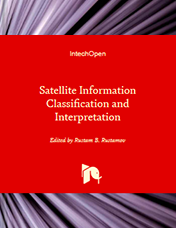Título
High-Resolution Satellite Imagery Classification for Urban Form Detection
Alias
190201-01-capitulo
Portada

Autores
Juan Manuel Núñez Hernández, Jorge Alberto Montejano Escamilla.
Año
2019
Fecha
2019-02-01
Categoría
Capítulos
Identificador
INEGI-CONACYT: 278953-S0025-2016-1 DOI: 10.5772/intechopen.82729
Hipervínculo revisado
01 Septiembre 2021
Abstract
Mapping urban form at regional and local scales is a crucial task for discerning the influence of urban expansion upon the ecosystem and the surrounding environment. Remotely sensed imagery is ideally used to monitor and detect urban areas that occur frequently as a consequence of incessant urbanization. It is a lengthy process to convert satellite imagery into urban form map using the existing methods of manual interpretation and parametric image classification digitally. In this work, classification techniques of high-resolution satellite imagery were used to map 50 selected cities of study of the National Urban System in Mexico, during 2015–2016. In order to process the information, 140 RapidEye Ortho Tile multispectral satellite imageries with a pixel size of 5 m were downloaded, divided into 5 × 5 km tiles and then 639 tiles were generated. In each (imagery or tile), classification methods were tested, such as: artificial neural networks (RNA), support vector machines (MSV), decision trees (AD), and maximum likelihood (MV); after tests, urban and nonurban categories were obtained. The result is validated with an accuracy method that follows a stratified random sampling of 16 points for each tile. It is expected that these results can be used in the construction of spatial metrics that explain the differences in the Mexican urban areas.

